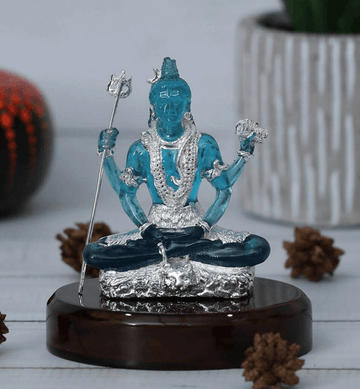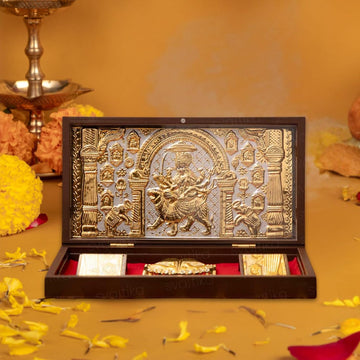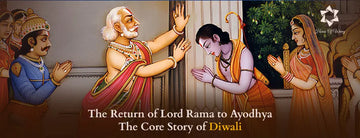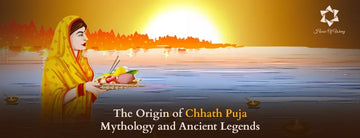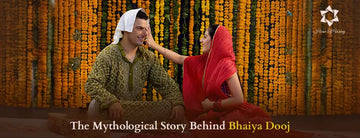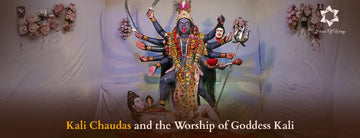Introduction to Diwali
Diwali, the Hindu festival of lights, isn’t simply a celebration -- it’s about return, redemption and the victory of truth -- Lord Rama returns to Ayodhya after spending 14 years in exile. Every year, when lights start to glimmer in every Indian home and the sky comes alive with colors, there is more to Diwali than meets the eye.
It’s a tale that continues to thump in the heart of India -- in people’s chants, in sparkles of light and in every Lord Ram idols placed on an altar at home as part of Diwali puja. It is said to celebrate the homecoming of Lord Rama, along with his wife Sita and brother Lakshman, from 14 years in exile after he killed the demon king Ravana.
Overwhelmed with happiness, the people of Ayodhya illuminated it with thousands of oil lamps to welcome back their king. The light is not only a celebration but a promise; the word goes out that good will always rise again.
Historical and Cultural Significance of Diwali
Historically, the mostly mythological Diwali has expanded too. Throughout India, it is observed as the close of harvest season and the start of a new year, as well as an opportunity to pay tribute to Goddess Lakshmi, who symbolizes prosperity. Those versions of the layers will be loosened again when Diwali 2025 dawns, a spiritual, cultural and economic reset for millions.
The Epic of Ramayana and Lord Ram
At the heart of this great festival stands out as Ramayana.’ One of the greatest Katha that Hindu’s hold in high esteem! Written by Sage Valmiki, the Ramayana is an epic Katha that represents the life of God Rama -- a prince of Ayodhya who was the essence of dedication and ethics towards humanity.
Apart from war & revenge stories, the Ramayana is about values -- action (duty), friendship and loyalty, sacrifice and forgiveness. Rama may be a myth, but his story is not just for scholars and believers -- it’s as relevant today as it was for the audience more than 2,000 years ago that first heard this tale.

The Exile of Lord Rama: Key Events
When Lord Rama went to the forest for 14 years from a palace in Ayodhya, an instruction issued by his father, King Dasharatha, the action wasn’t entirely political -- but deeply ethical as well. Rama accepted exile without protest. He is accompanied into the forest by his wife Sita and brother Lakshman, giving a message on how family and dharma (duty) must be intertwined.
The exile was to be more than punishment -- it would be the theatre of virtue’s trial, friendships forged and evil challenged.

Role Of Sita And Lakshman In The Story
Sita was no simple queen who followed her husband; she stood for faith and loyalty. In all the forests, beneath every tree, her never-failing support infused Rama with emotional strength. Lakshman was equally faithful; he symbolized brotherly love and protection.
Together, they formed a trio of resilience -- one that continues to define the way Indian families view love and duty during Diwali and beyond.
Ravana’s Abduction of Sita
The katha takes a frightening turn when she is kidnapped by Ravana, the powerful king of Lanka. It was not only an act of lust, you see -- it was a test of power and arrogance versus righteousness.
Rama was not a man’s grief and grievance; it was the suffering of truth being indented against falsehood. At the heart of that battle, the world witnessed what it means for good to stand up to evil – a timeless message passed on by the Diwali story.

Lord Rama’s Battle with Ravana
Rama-Ravana war was not fought only with arrows, but it was a battle of ideologies. On the side of dharma -- the cosmic law -- were Rama, led by an army including Hanuman, Sugriva and the Vanara Sena.
Ravana, who was not only an intellectual but also a bhakta of Lord Shiva, His defeat wasn’t just a victory for Ayodhya -- it was a spiritual parable, reminding us that where ego goes up, it must come down.

Divine Assistance and Allies in the War
Lord Rama was not without help. The divine god Hanuman, with zero selfishness & dedication to Lord Rama, was the medium between the human and divine. It was not just courage when Hanuman flew across the ocean to look for Sita.
The whole Vanara army came forward to bridge over the sea, leading to Lanka, known as Rama Setu, which has amazed modern archaeologists. That league of humans, animals and gods was more than shared adversity; it was a sense of common cause -- a powerful lesson even in these divided times.
The Victory of Lord Rama over the Evil
With the fall of Ravana, Dharma was re-established. Dharma(Truth) had won, but Rama wouldn’t lose himself in appraisal – he conducted the last rites of Ravana, recognising his excellence as a scholar. That act determined what true win meant -- not to demolish the enemy but to keep in place humanity even in defeat.

The Return of Lord Rama to Ayodhya
Lord Rama, Sita and Lakshman returned to Ayodhya after years of struggle and penance. The people had been waiting long -- with longing hearts, “Clean streets and lights all flushed with oil: Suddenly as they entered the city, the whole Ayodhya was illuminated.
Just think of that night -- the scent of burning ghee lamps, the distant echo of drums, cheers in the streets and flowers spilling from balconies. It was the festival of Diwali, when light returned home with Rama.
Until this day, Ayodhya Diwali still captures that same emotion. Sarayu River banks are worshiped by thousands of diyas. Flowers are covered with the Lord Ram idols and prayers are recited throughout the night. This is not simply a Ramayana festival but an occasion when mythology feeds living tradition.

Celebration of Diwali in Ayodhya
The festival here is one of the most glorious in India today. In 2023, more than 22 lakh diyas were lightened & devoted on the ghats of Sarayu -- a world record that wasn’t about numbers just but was a display of devotion.
The families simply cherish their homes, dressing them up, performing Diwali puja with Goddess Lakshmi and Lord Ganesha to welcome the wish-fulfilling protector of life, as a good wealth and wisdom provider. Firing off crackers, lighting diyas and sharing sweets are more than functions; they represent the joy of people over Rama’s return.
Symbolism of Light Over Darkness
Each diya sparkling on Diwali is more than an ornament. It is a forever reminder that light must always rise above the evil and that no matter how squint it might appear, even the duration of exile, truth has a home to which all paths lead back.
The Diwali mythology invites us to know that external light matters only when we discover the lamp inside ourselves -- by way of kindness, forgiveness and self-discipline.
Traditional Diwali Rituals and Practices
People clean and decorate their homes, shop for new appliances or jewelry (believed to be auspicious) and keep small Lord Ram idols and Goddess Lakshmi in the middle of their Diwali puja. Merchants start new account books, considering it as a new way to success and wealth.
Diwali traditions, such as lighting diyas, cooking sweets and visiting temples, are gestures of gratitude -- gratefulness for the divine for having protected dharma, it concludes.
Regional Variations of Diwali Celebrations
- In India, the tale of Diwali Celebrations takes a different shape but retains its essence.
- In North India, it signifies Rama’s return to the city of Ayodhya.
- In South India, it’s more synonymous with Lord Krishna when he brings down Narakasura.
- In Gujarat, it is dedicated to the goddess of wealth, Goddess Lakshmi.
- In Bengal, it occurs with Kali Puja -- an invocation of the brutal form of divine energy.
-
It is the diversity that makes us so full of light with Diwali significance.
Spiritual Lessons and Moral Teachings According to the Narrative
The Diwali story is more than fireworks or rituals. It’s about introspection.
Lord Rama’s life journey teaches us that patience overcomes impulsiveness, humility over pride and truth is more powerful than might. When you light a diya this Diwali 2025, remember -- it’s not just a celebration. It’s a mute prayer for light to come back where darkness still exists -- either in the heart, or home, or society.
And as you set your Lord Ram idols and fold your hands, you’re not just carrying on a ritual -- well, yes, that too -- but you’re entering into the middle of a Rama return story that began thousands of years ago, yet is still glowing nearly as bright with the same universal truth.
In the end, Diwali is more than a festival of lights; it’s a celebration of homecoming -- not simply in waiting for resolution but as proof that goodness, courage and faith are never defeated, even in exile.
When Lord Rama came back to Ayodhya, it was not only a city that he brought light back to, but he also restored hope in the hearts of mankind.

